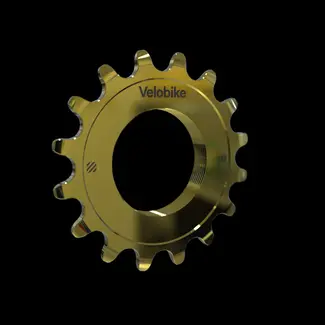Please allow a delivery delay of 5-10 business days on orders which include backordered items.

Specifications:
The below graph illustrates the difference in materials that are common for sprockets to be made out of. Titanium Ti-6AI-4V has the greatest yield strength of all the materials, making it the most resistant to permanent deformation. At just over half the weight of 304 Stainless steel, larger gear combinations will not compromise the performance of your bike due to the extra weight. Titanium has a similar hardness to stainless steel sprockets, so without any coatings the two materials are comparable for efficiency.

Coatings are common on drive chain components to assist with efficiency and durability. Titanium Nitride is 111% harder than hard chrome plating and 143% harder than Hard anodizing. Titanium Nitride also has the benefit of being applied to the material surface with greater thickness consistently, reducing the chance of the part exceeding manufacturing tolerances during the process.

